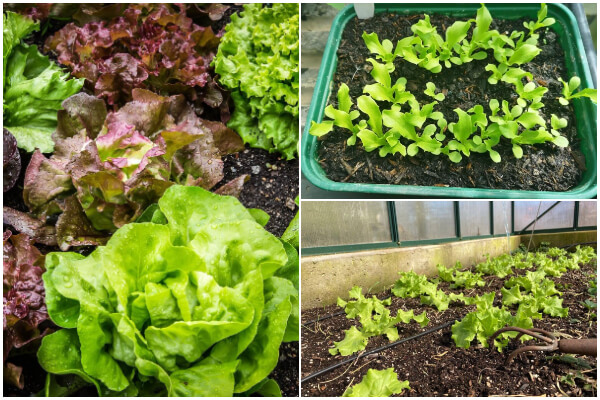Let’s dive into the world of growing lettuce! While it might not be the most exciting crop, lettuce definitely deserves a spot in every garden. It’s easy to grow, has minimal pest and disease issues, and provides the joy of a fresh, crunchy salad straight from your backyard. Plus, there are numerous unique lettuce varieties to try—many of which aren’t found in stores. Follow these best practices for growing lettuce and enjoy a healthy, abundant crop.
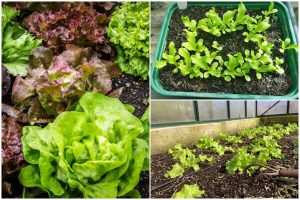
This guide to growing lettuce will walk you through the best temperatures, how to start it from seeds, and the essentials for proper plant spacing, sunlight, soil, watering, and fertilization. We’ll also discuss strategies for protecting your lettuce from extreme weather, as well as the best methods for harvesting and storing your lettuce to maintain freshness.
1. Lettuce varieties
Romaine, iceberg, redleaf, bibb, buttercrunch, and salanova—just a few of the many lettuce varieties available to grow! Choose varieties you enjoy, but also consider types that suit your climate. Heat-tolerant varieties or those resistant to bolting are perfect for unpredictable spring weather or warm autumns. Lettuce with open heads works well for cut-and-come-again harvesting, a method that allows you to harvest lettuce continuously. Some of our favorites include Coastal Star, Nevada, Freckles, Magenta, Red Mist, and Muir.
Starting lettuce from seed gives you the greatest variety of options, but you can also find a good selection of varieties at local nurseries.

2. When is the best time to plant lettuce?
The timing of planting lettuce seeds depends on several factors: when you want to start harvesting the leaves, the specific variety you select, and the climate in your region.
Lettuce thrives in cooler seasons and tends to prefer moderate temperatures. If you reside in a warmer climate, consider choosing heat-tolerant varieties that are less likely to bolt or flower prematurely. Planting these varieties in partially shaded areas, possibly alongside taller leafy vegetables, can help create favorable growing conditions.
For those who enjoy adding lettuce to salads and sandwiches throughout the year, it’s important to stagger your planting times to ensure a continuous harvest.
Additionally, lettuce grows well in container gardens, offering the flexibility to extend the growing season by moving containers to protected locations when necessary.
3. What months should you plant your lettuce?
Lettuce can be planted during various months, depending on your desired harvest time.
For a summer and fall crop, lettuce seeds can be sown directly outdoors from early spring through late summer. Gardening expert Jo Gardener suggests, “Sow lettuce seeds directly into the garden, covering them with a fine layer of soil after the last hard frost.” While most lettuce varieties can handle a light spring frost, it’s best to wait until severe frost risks have passed.
Lettuce seeds typically germinate within one to two weeks in soil temperatures ranging from 40°F to 75°F (4–23°C), although the ideal range is 40°F to 60°F for optimal growth, according to Jo.
Plant seeds thinly at a depth of about ½ inch, spacing them 8 inches apart in rows approximately 1 foot apart. To enjoy a steady harvest, sow new seeds every couple of weeks. This approach not only ensures a continuous supply of lettuce but also maximizes the efficiency of small garden spaces.
4. Soil, water and fertilizer for your lettuce
Lettuce thrives in loose, well-draining soil enriched with organic matter, such as amended native soil or quality potting soil mixed with compost or worm castings. Consistent moisture is key, so water regularly—at least twice a week—keeping the soil evenly damp but never waterlogged. We’ve set up automated drip irrigation in our raised beds, which both we and the plants enjoy!
Because lettuce has shallow roots, applying mulch around the plants is essential. Mulch helps retain moisture in the topsoil, prevents it from drying out, and protects the roots from sudden temperature changes.
For healthy, lush foliage, lettuce requires sufficient nitrogen. Before planting, incorporate a gentle slow-release organic fertilizer into the soil. Alternatively, you can feed the plants during the growing season with diluted liquid seaweed, compost tea, alfalfa tea, or fish emulsion.
5. How much sunlight does lettuce require? Can it thrive in shaded areas?
Lettuce flourishes in full sunlight, ideally receiving 6 to 8 hours of direct sunlight each day. However, many lettuce varieties can also adapt to partial shade, benefiting from 4 to 6 hours of sunlight. In fact, they may perform better with some afternoon shade, particularly during hot weather.
6. How to grow lettuce from seed
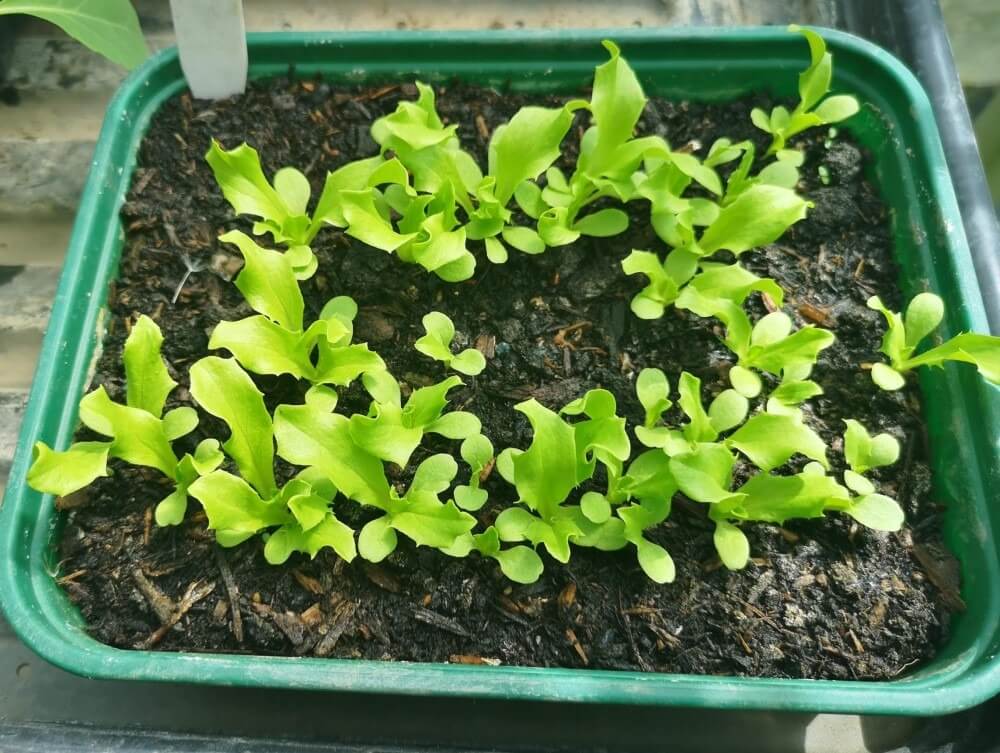
Here are some tips for Starting Lettuce from Seed!
- If you’re using nursery seedlings instead of growing lettuce from seed, feel free to skip ahead!
- Lettuce seeds can be directly sown outdoors or started indoors, with seedlings transplanted into the garden a few weeks after germination. Personally, I prefer starting lettuce indoors to protect the delicate sprouts from birds and insects.
- Since lettuce seeds require light to germinate, ensure they are placed under bright conditions if starting indoors. A sunny windowsill may suffice, though it could lead to leggy seedlings. For optimal results, I highly recommend using a grow light.
- Lettuce seeds also favor cooler soil compared to most other seeds. The ideal soil temperature for germination is 60–75°F, though seeds can sprout in temperatures as low as 40°F (albeit more slowly). However, at temperatures exceeding 85°F, lettuce seeds may enter dormancy. Avoid using a seedling heat mat for lettuce unless you’re working in an exceptionally cold environment.
- When sowing, place lettuce seeds on the soil surface and press them lightly or cover them with no more than ¼ inch of loose, fluffy soil. Since they require light to germinate, avoid burying them too deeply.
- For outdoor planting, sow seeds or thin them according to the recommended spacing guidelines below. Keep the soil’s surface consistently moist (but not waterlogged) until germination occurs. For indoor seedlings, switch to bottom-watering once they sprout.
- As soon as the seedlings develop their first set of true leaves, thin them to one seedling per cell by trimming the extras rather than pulling them out.
- Finally, follow standard seed-starting practices, including hardening off indoor-grown seedlings before transplanting them outdoors to reduce the risk of transplant shock.
7. What’s the Ideal Spacing for Lettuce Plants?
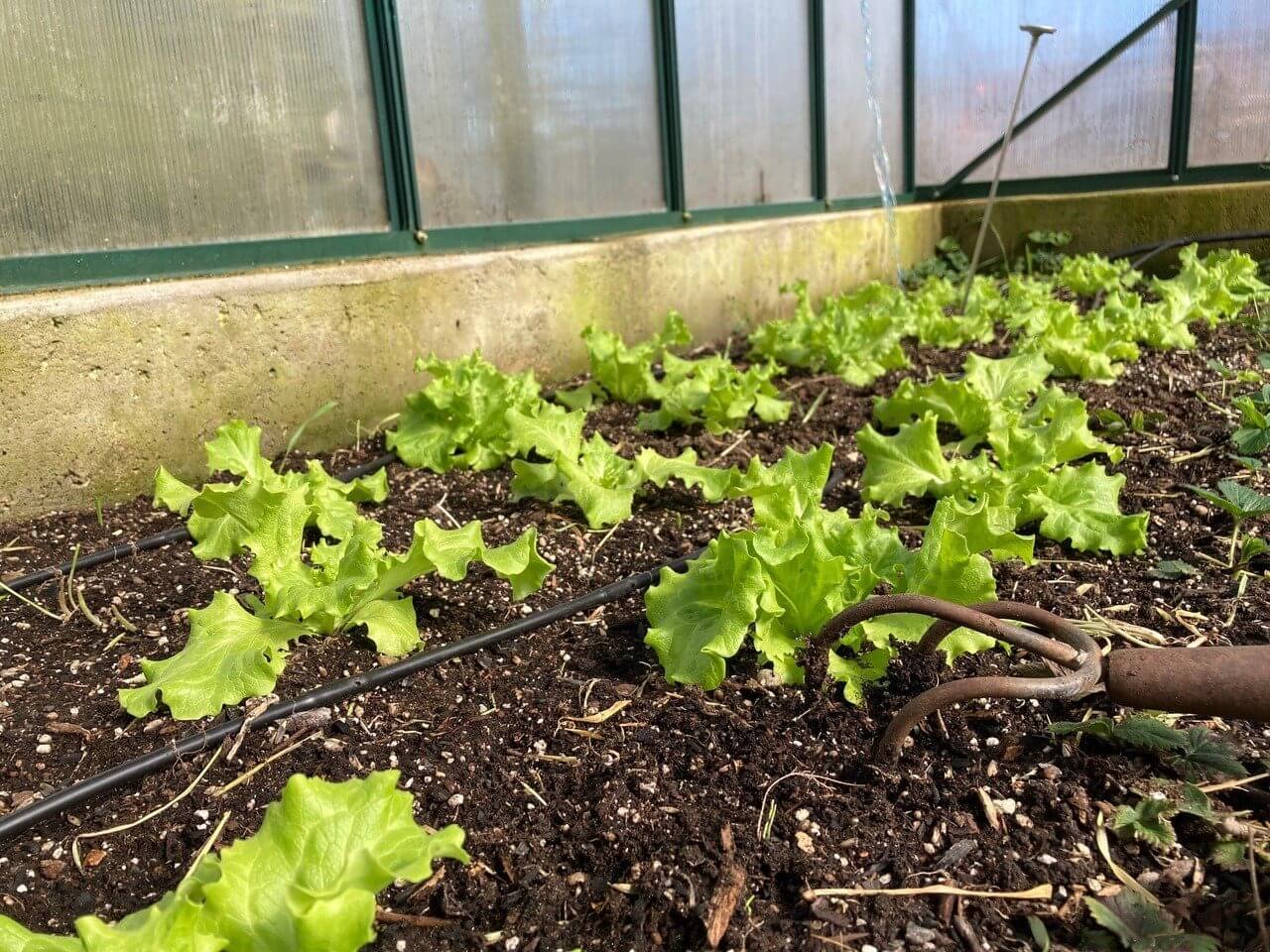
Lettuce spacing depends on the variety and your intended harvest size or use. Most types of lettuce require at least 6 inches of space between plants (measured center to center) to allow full heads to develop. Larger varieties, like romaine and butterhead, may need up to 8 inches of room. On the other hand, smaller loose-leaf lettuces can be spaced as close as 4 inches apart, while baby greens are often densely sown in clusters with minimal spacing.
Proper spacing is crucial for healthy lettuce growth and the formation of compact, dense heads. Crowded plants compete for essential resources such as nutrients, water, root space, and airflow, which can result in weak, spindly growth. This principle applies whether you’re growing lettuce outdoors or starting seedlings indoors, which is why thinning young seedlings early is so important.
Overcrowded plants are also more susceptible to pests and diseases, making adequate spacing a key factor in cultivating healthy lettuce crops.
8. Is it possible to grow lettuce in containers?
Absolutely! Lettuce is an excellent choice for container gardening. Thanks to its compact size and shallow roots, it thrives in a variety of containers, such as grow bags, wine barrels, plastic planters, or terracotta pots. You can even cultivate lettuce indoors in containers placed on a sunny windowsill or under grow lights.
Opt for a container with a depth of at least 6 to 8 inches and ensure it has proper drainage holes at the base to prevent waterlogging. If you choose a wider container, you’ll have enough room to grow multiple lettuce plants within a single pot.
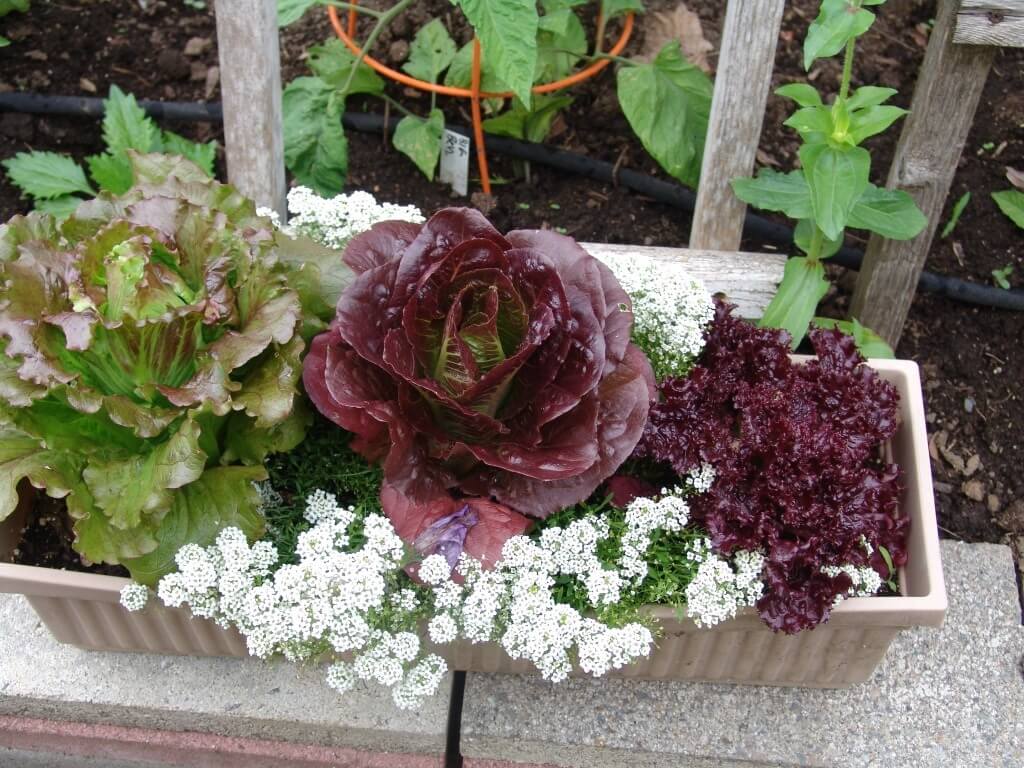
9. Harvesting Lettuce: A Step-by-Step Guide
Lettuce can be harvested at any stage and in whichever way suits your needs! For baby leaf lettuce, pick individual small leaves from young plants. When doing this, always leave several leaves behind to allow the plant to continue photosynthesizing and growing, and avoid removing the central leaves. Alternatively, you can wait until the plant is fully mature and harvest the entire head at once by cutting it at the base rather than uprooting it. Some lettuce varieties will even regrow after harvesting.
One of my favorite techniques is the “cut and come again” method. Instead of harvesting the entire head, I simply snip or pull off a few of the outermost, more mature leaves from each plant as needed—whether every few days or weekly. This approach allows you to enjoy a continuous supply of fresh lettuce from the same plants for several months. It’s an excellent way to maximize your harvest, even with just a small number of plants!

